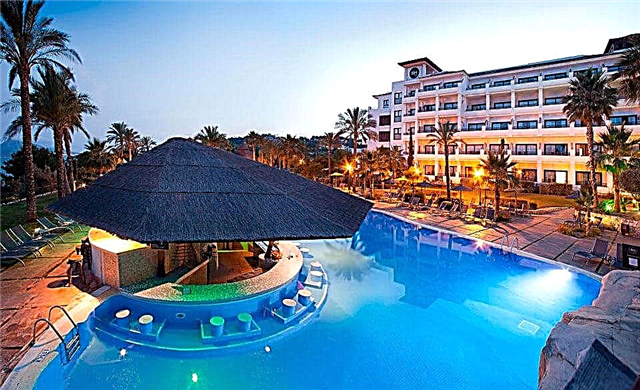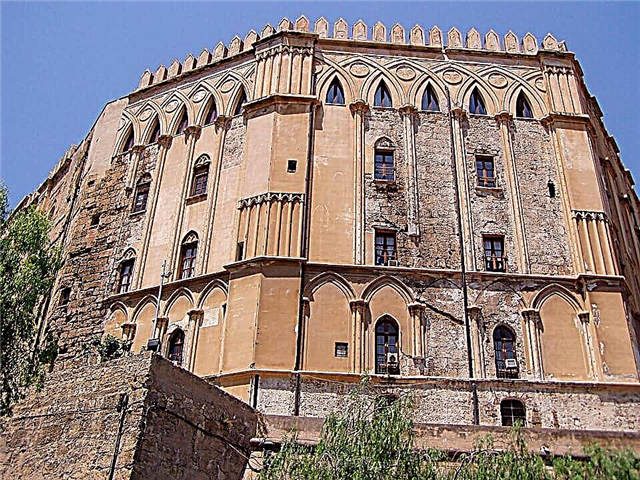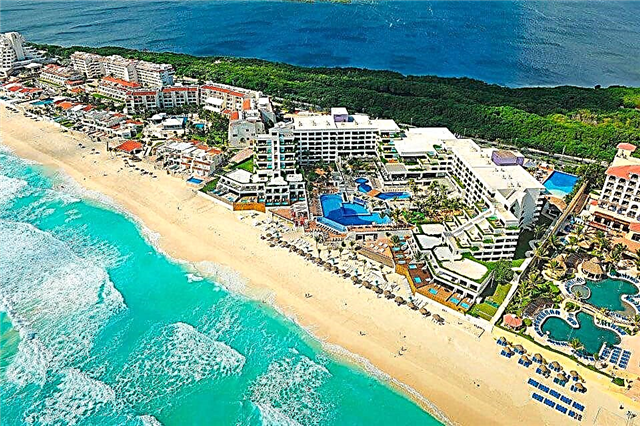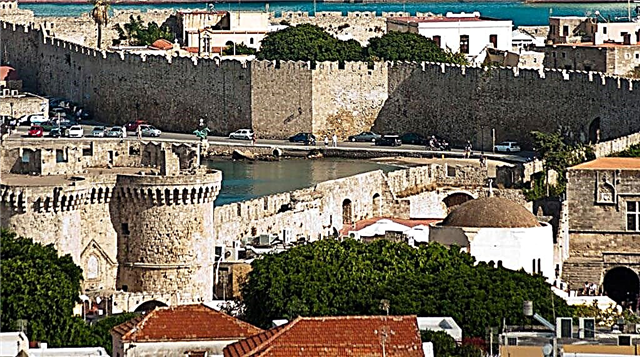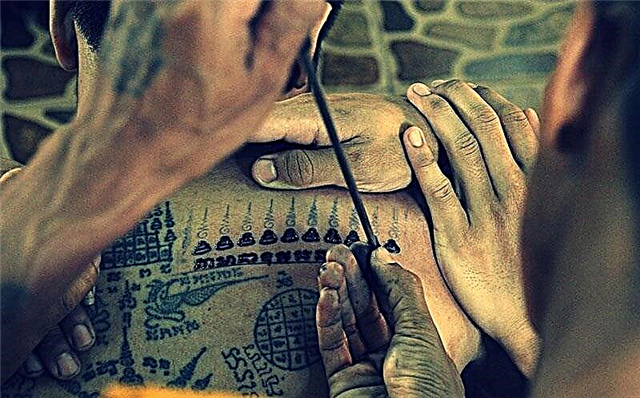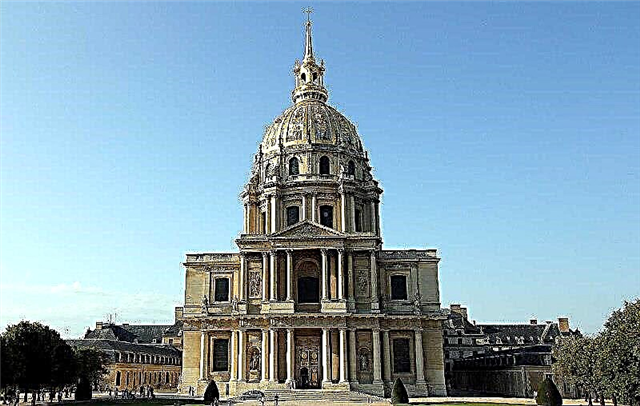If you look at the monumental buildings and landscape beauty of the surrounding area from above, you will never think that all this grandeur is called the House of Invalids. The scale of buildings, their number, a huge courtyard area, interesting architecture testify to the worthy attention and respect of the French kings to those who needed help and care. This complex, which can be called a mini-town, serves as an example to all the rulers of this world, how it was necessary to pay tribute to the soldiers who received disabilities while protecting the king and, in his person, the state.
History

Although it contains many Napoleonic symbols, including his ashes, the merit in the idea of building and erecting the House belongs to King Louis XIV. Observing the former military in the role of numerous beggars on the streets of Paris, in 1670 he issued a decree on the construction of a shelter for young disabled soldiers and already old retired soldiers.
Such a decision not only saved the situation, but significantly raised the prestige of the army in the eyes of young people who had not yet fought.

In the suburb of Grenelle, a vacant lot was chosen, and the work on translating the idea into reality was carried out by the court architect Bruanu. After 4 years, residential, office, hospital buildings were built, 5 courtyards were equipped, and the first disabled, veterans settled in 1674. But the construction continued for many more years, and by 1710 the House of Invalids had turned into a real city inhabited by 4,000 veterans.
It had its own charter, strictly subordinate to church and military rules. Tapestry, engraving and shoe workshops were opened, in which the inhabitants of the House worked. The new monastery could not accommodate everyone who wanted it, so a settlement regulation was introduced: veterans with at least 10 years of military service had the priority right. But this did not apply to seriously injured people who received a deep disability, and seriously ill people in need of care.
Louvre: Time-Specific Entry Ticket
1-hour cruise "Lights of Paris"
Skip-the-line tickets to the roof of the Arc de Triomphe
Eiffel Tower: Second Floor Access
Versailles & Gardens: Skip-the-Line Entry Ticket with Audio Guide
Hop-on Hop-off Bus Tour. Class., Prem. or Lux
Paris museums subscription: 2, 4 or 6 days
Tickets for Montparnasse: 56th Floor Roof Terrace
Show at the Moulin Rouge with champagne
Architecture

The fully completed grandiose structure impressed with its large-scale dimensions (400x450m), only the length of the main facade overlooking the Seine was 196 m. The 107-meter gilded dome of the church, which became an integral part of the ensemble, looked majestically. It (the church) has been under construction for almost 30 years and is an original construction of a double cathedral: in the nave there is a soldier's church, and behind a glass partition there is a royal one, whose golden dome is visible from afar. The cathedral, built in the classical style, was given the name of Saint Louis in honor of the king, who took care of his subjects, crippled by wars. The entrance to it is decorated with military flags and banners of different countries, obtained as trophies in battles.
A number of slender columns give the cathedral lightness and grace; the dome with its decor, openwork lattices of fences, a quadrangular turret of a domed lantern and a conical spire resembles the precious royal cap of Monomakh. The double structure of the dome was created by the architect Mansart, placing large windows in the lower outer part through which the interior painting is illuminated. The entire domed part in 1989 was covered with new gilding, which took 12 kg. gold.

In front of the complex of buildings there is a huge (500x250m) square, officially called the Esplanade of the Disabled, going from the Seine embankment and the Alexander III bridge to the central facade. Landscape architect Robert de Côtes has designed the magnificent lawns and curvy alleys that have transformed the once empty space into a beautiful man-made landscape. All residential and office buildings are also built in a strictly classical style, perfectly fitting into the majestic ensemble of the surrounding area.
Home for the Invalids Today
Beginning in 1777, the architectural complex gradually loses its status as a place of charity for the disabled and pensioners, and acquires the features of a museum object. First, the Museum of military exhibits was organized, which were brought from the Louvre; later the Museum of Artillery was opened here. It was merged in 1905 with the Historical Museum of the Army, and now it is a single Army Museum, which occupies a fairly substantial part of the complex.
Two more museums are open for visiting - the Order of the Liberation and Modern History, the expositions of which illustrate military battles, reflect the power of the French Armed Forces. Directly at the entrance, even at the suggestion of Napoleon, who repeatedly visited the House, a number of artillery cannons, domestic and captured, were installed at the very entrance as symbols of the emperor's triumphant victories.

In the Cathedral of St. Louis there are the remains of the honored military leaders of the country. Here in 5 coffins are buried brought from about. ST. Helena's remains of Bonaparte. They were placed in a sarcophagus on a green granite pedestal. Eight words printed in gold on the marble at the pedestal denote the military victories of the great emperor. The family tomb of relatives is located nearby, in which his son, brothers Jerome and Joseph are buried. Here lie the ashes of the famous marshals and generals: Thurren, Vauban, Foch, Lietei, Duron and Bertrand.
But along with this, in this territory, like many years ago, veterans of past and modern wars live in a military hospital.

On the days of special festive celebrations of the state, from 18 rare cannons installed at the northern entrance, the salute of cannon volleys is thundering.
Use the services of kiwitaxi and at the airport, at the specified time, the driver will be waiting for you, help with the luggage and promptly take you to the hotel. Several car classes are available - from economy to Minibus with 19 seats. The price is fixed and does not depend on the number of passengers and the address within Paris. A taxi from / to the airport is a convenient and comfortable way to get to your destination.

